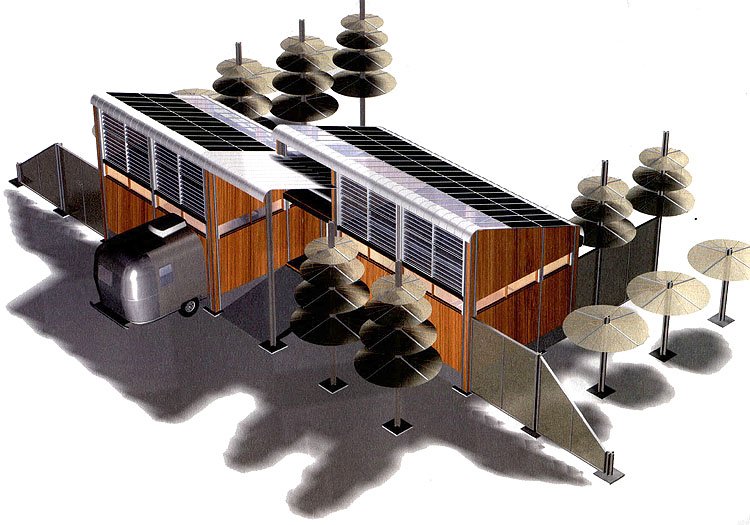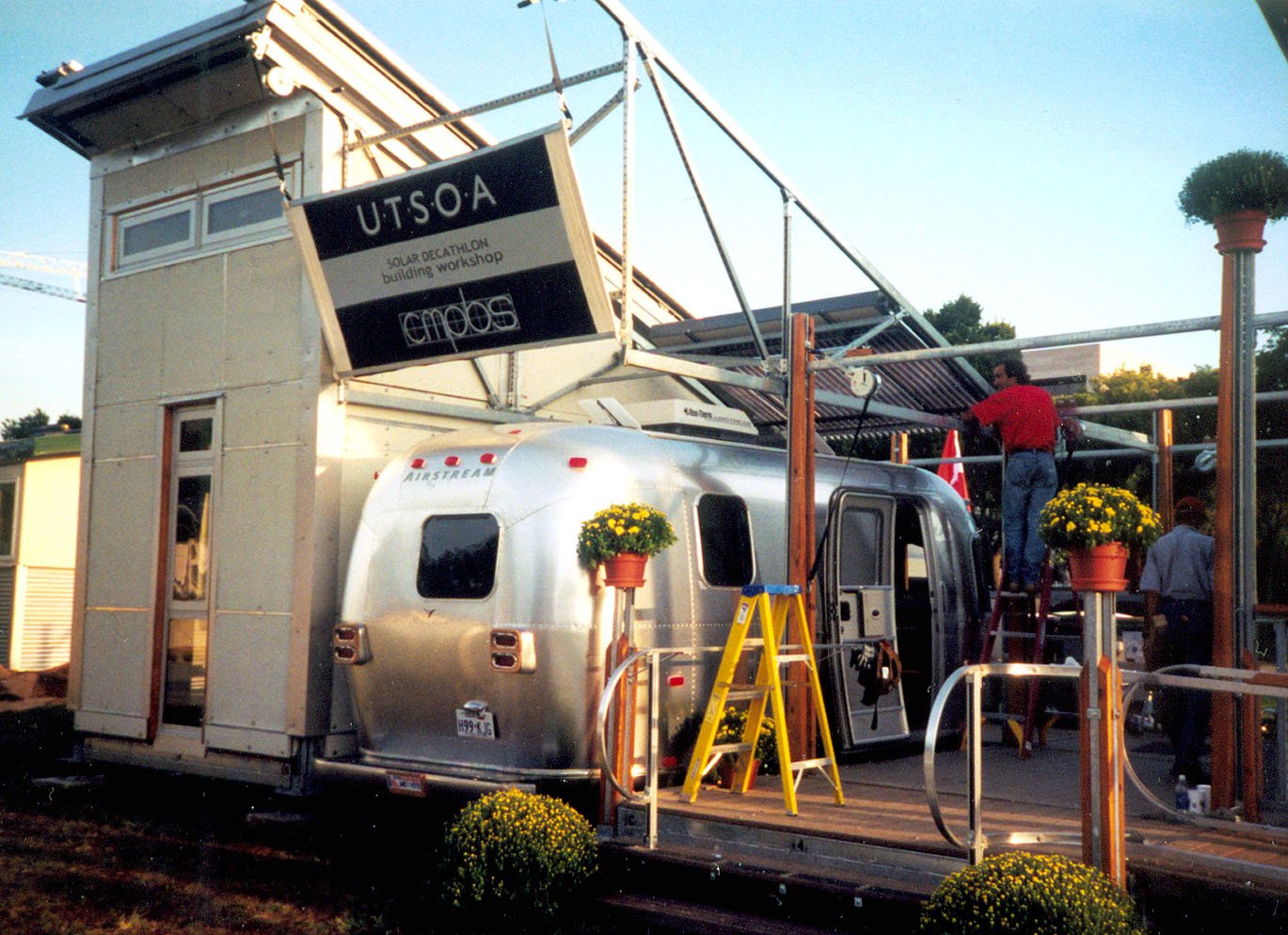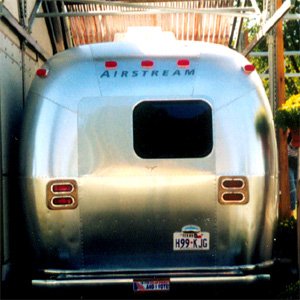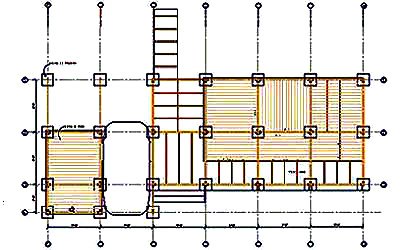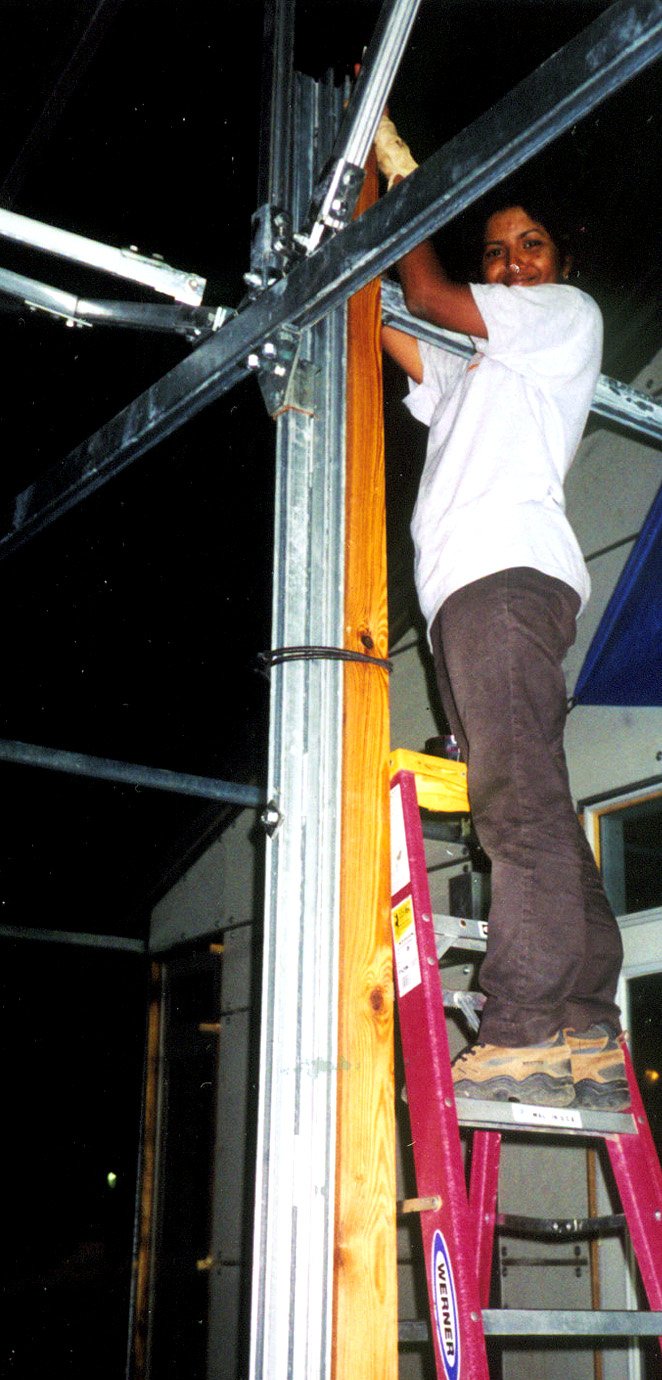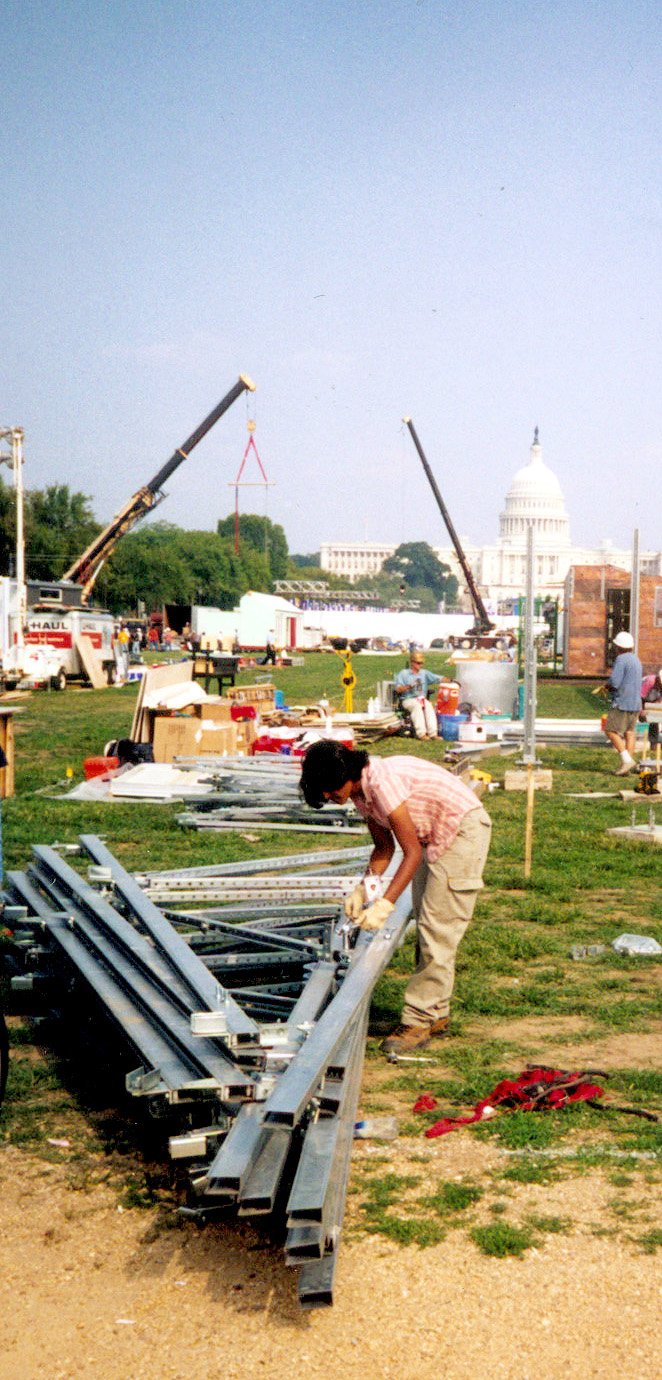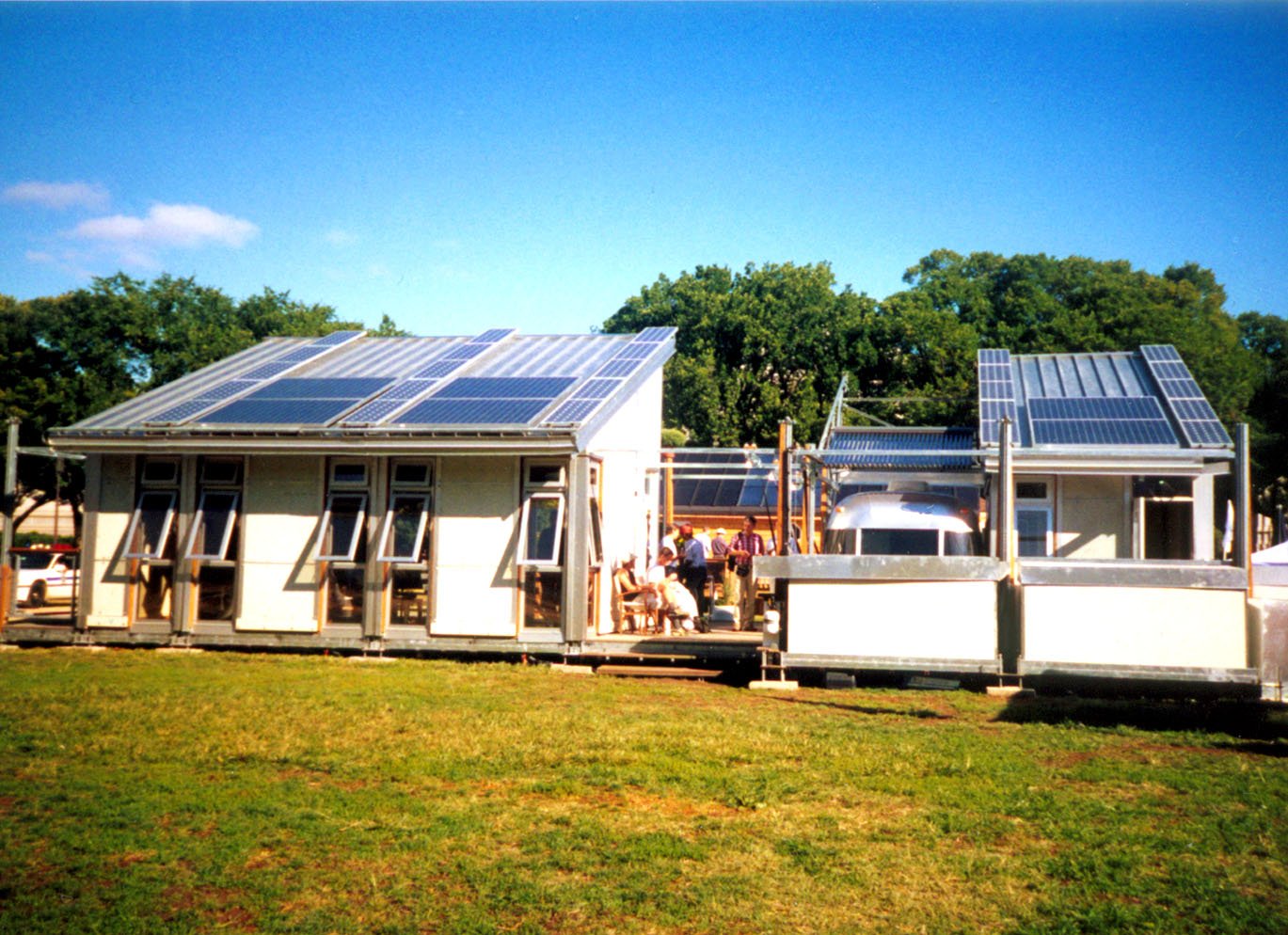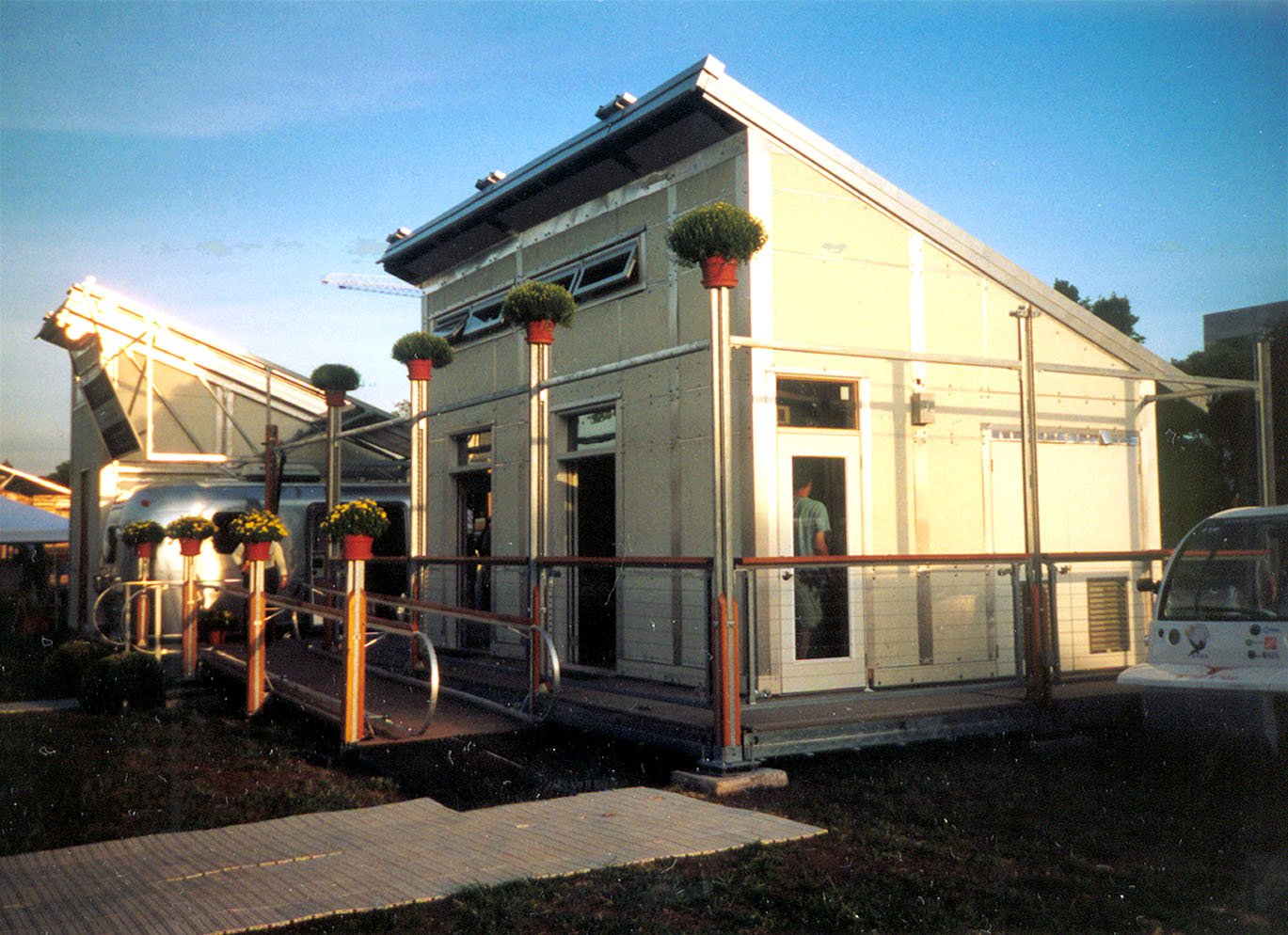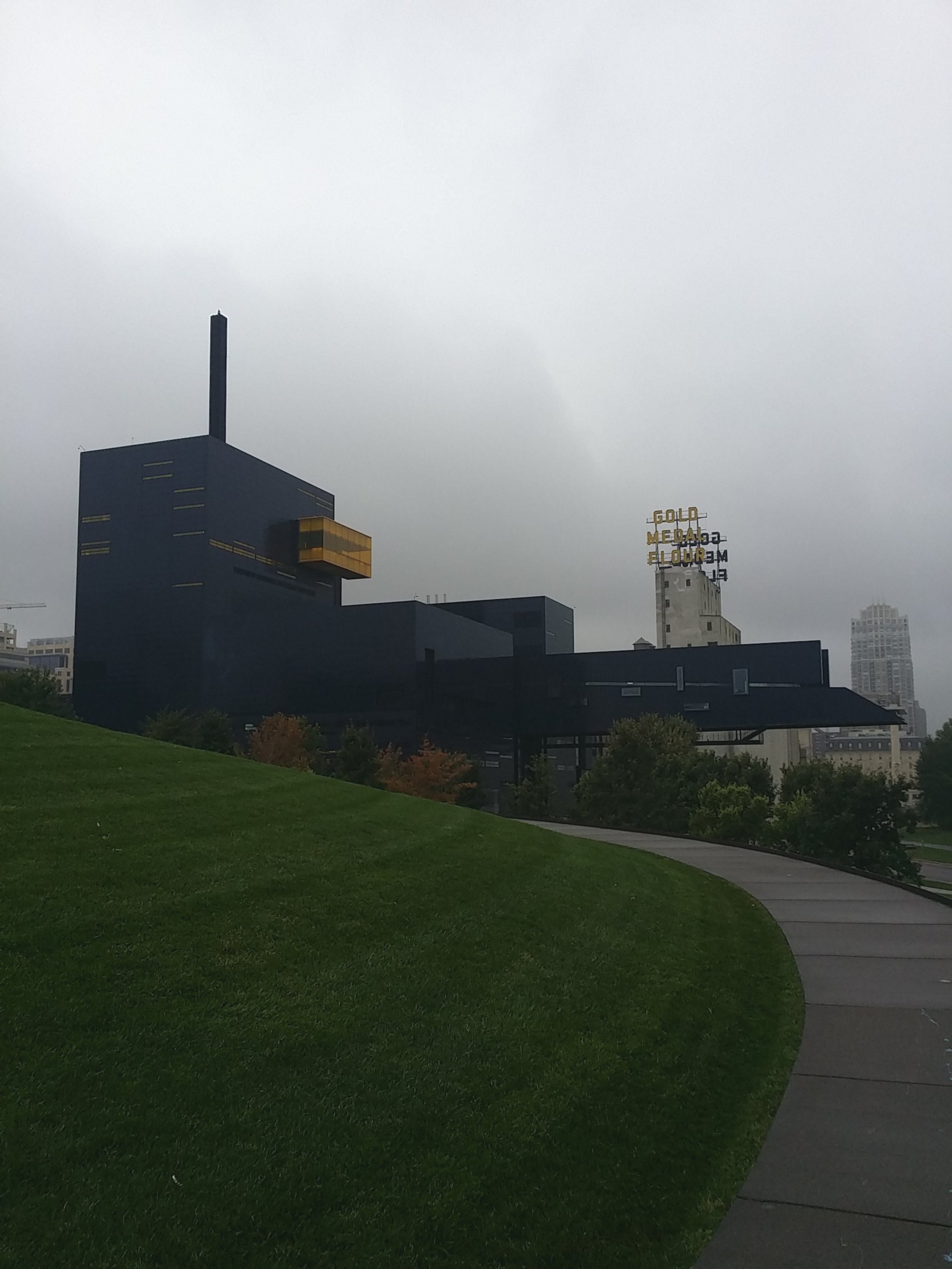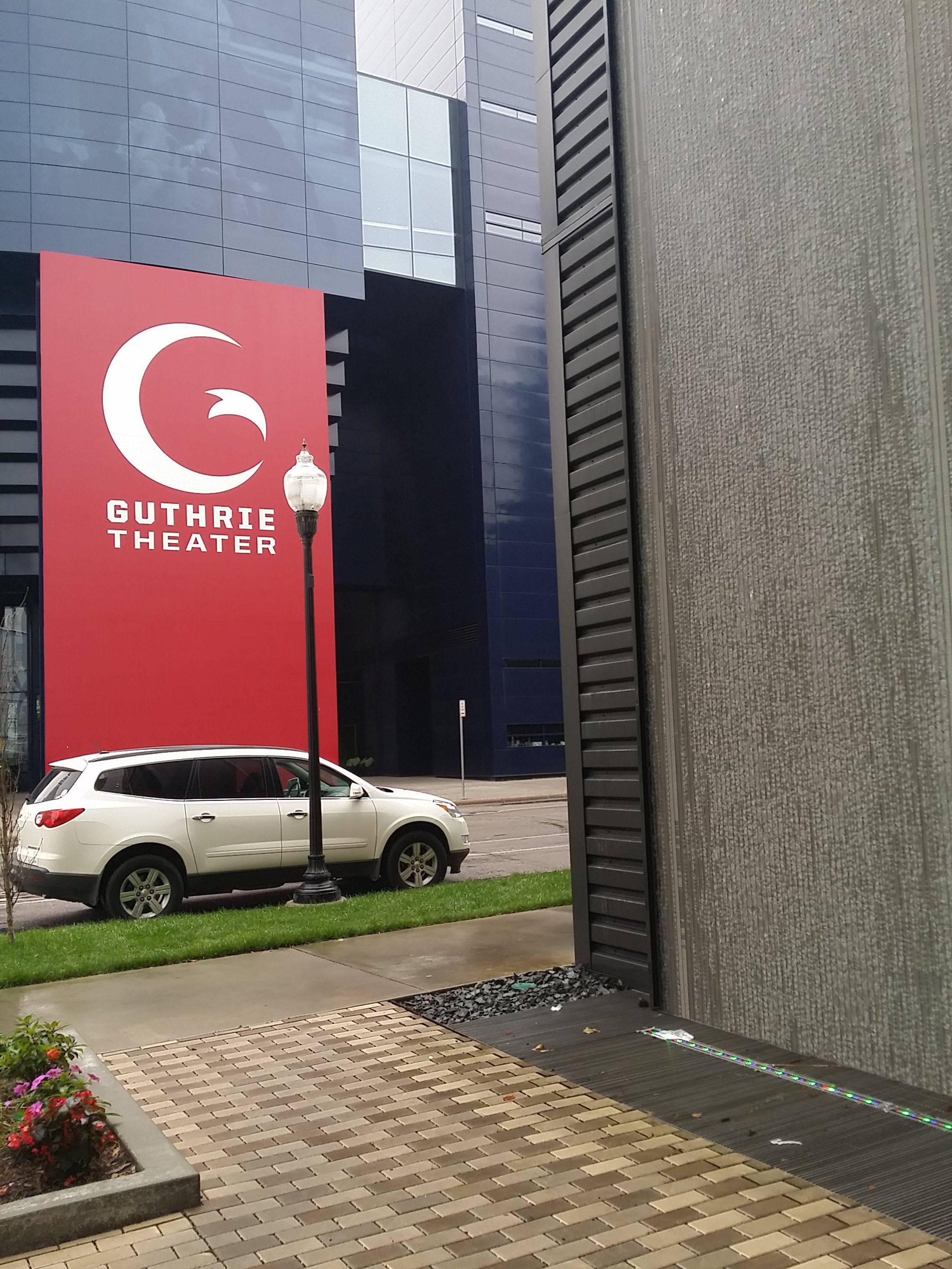I suspect this Architalks topic was meant to induce nostalgia - shuffle through some old pictures (remark on how young and thin we were back then), dig up fading memories, and reminisce about good times. Why else would one want to revisit their first project? Well, I would like to talk about my first-ever design project that got built. It was a competition project that I was involved in when I was in graduate school. We slogged over it for 4 long semesters, including a sweltering summer of hands-on construction.
At the end of that project, I was tanned beyond recognition, had calluses that a rancher would envy, and knew a lot about energy production and efficient building systems design. This is where my math brain really came in handy.
It takes me back 15 years to the year 2000, right at the turn of the 21st century. I had traveled from a far away land (India) to be part of The University of Texas at Austin. I was working on my Masters at The School of Architecture, which was one of the few schools that offered a "Design with Climate" graduate degree program. The future was full of promise. It was going to be awesome.
Solar Decathlon
The US Department of Energy (DOE) had just announced a national collegiate competition. Their purpose was to raise public awareness of energy-efficient design and construction as well as to foster innovation in multidisciplinary fields of clean energy. The competition challenge was to design, build, and operate a solar powered house, completely off-the grid. The entries would be tested and evaluated based on 10 different contests. The criteria included aesthetics, affordability, innovation, energy efficiency, comfort, livability, commuting, etc. They called it the Solar Decathlon.
The first-ever Solar Decathlon was held in October 2002 and teams were to assemble their houses on the National Mall in Washington D.C. It was such a huge success that the competition has since expanded to include other countries, and occurs biennially. The 7th Solar Decathlon took place this past month, October 2015.
Team UT
We (the grad students in the "Design with Climate" program, under the leadership of Professor Michael Garrison) teamed up with Pliny Fisk and his Center for Maximum Potential Building Systems (also called Max's Pot), here in Austin.
Solar Decathlon 2002
Our design
We designed a home-office that harkened to the old dog-run style houses. Since we had to produce our own power using clean energy (solar photo-voltaics), we did not want to spend it all on air-conditioning. Also, in the hot-humid climate that we experience in Austin, a summer breeze can do much to keep you comfortable. So, a dog-run style breezeway created opportunities for outdoor spaces to enjoy a cool morning or evening in the shade.
The most unique feature of our design was that the kitchen/ bathroom component of the house was fulfilled by an Airstream (à la, true Austin Weird). Brilliant, right?! This way, we eliminated having to build one of the most complicated systems in a household (plumbing, installing appliances), we isolated the parts of the house that produce the most heat and humidity (kitchen and bath), and added the convenience factor (if you take a trip, you take your kitchen/ bath with you).
The south facing roof was fitted with 3.6KW of photo-voltaic panels that harnessed solar energy that we stored in batteries.
I was in-charge of the production of hot water. We looked at several solar water heating options, including the old-fashioned flat plate collectors, but the numbers did not work out. We eventually found a more high-tech product in the Thermomax evacuated tubes. This also allowed us to use hot water for space-heating. The glass tubes with the copper pipes and filaments looked so beautiful, gleaming in the sunlight, that we decided to expose the underside and use it like a pergola.
For ease of construction, transport-ability, and easy assembly at the competition venue, the house was comprised of a kit of parts. The layout of spaces followed a modular structural grid. We built the house at Max's Pot over the summer semester. We then disassembled it, and packed it all up, and sent it to D.C. in a trailer. We had 2 days and 2 nights to assemble the building on the national mall, and have systems up and running for the week-long competition.
Sure enough (Murphy's law), we had cloudy days when we were running our tests and taking measurements. Of course, we had taken this into account for our photo-voltaic and hot water design.
We did not win big! But it was quite a project and quite a build-experience, not to mention a great team-building exercise. I've run into some of the people on the team who have stuck around in Austin, but I wonder what everyone else is up to.
The future is now
It's exciting to see the competition still going strong. Although energy-efficient design is still not mainstream in the American home market, it's encouraging to see the continuing push for new programs, building technologies, and incentives. For more resources, check out http://energy.gov/eere/buildings/building-technologies-office.
I for one think, we need a new energy paradigm.
Cheers,
Sharon.
This post is a contribution to the #Architalks series of blog posts. For other blog posts on "My First Project", please click on links below.
Bob Borson - Life of An Architect (@bobborson) My First Project: The Best Project Ever Designed That Wasn't
Marica McKeel - Studio MM (@ArchitectMM) My "First Project"
Jeff Echols - Architect Of The Internet (@Jeff_Echols) My First Project - Again
Lee Calisti, AIA - Think Architect (@LeeCalisti) first project first process
Mark R. LePage - Entrepreneur Architect (@EntreArchitect) Our First Architecture Project [#ArchiTalks]
Lora Teagarden - L² Design, LLC (@L2DesignLLC) #ArchiTalks: My first project
Jeremiah Russell, AIA - ROGUE Architecture (@rogue_architect) my first project: #architalks
Eric T. Faulkner - Rock Talk (@wishingrockhome) The First One -- A Tale of Two Projects
Rosa Sheng - Equity by Design (@EquityxDesign) Why every project is my "First"
Michele Grace Hottel - Michele Grace Hottel, Architect (@mghottel) "My First Project"
Michael Riscica - Young Architect (@YoungArchitxPDX) The Early Years of My Architecture Career - My Role
brady ernst - Soapbox Architect (@bradyernstAIA) I Hate Decks
Eric Wittman - intern[life] (@rico_w) [first] project [worst] crit
Emily Grandstaff-Rice - Emily Grandstaff-Rice AIA (@egraia) Project Me
Daniel Beck - The Architect's Checklist (@archchecklist) Fake it 'til you make it
Jarod Hall - di'velept (@divelept) Define First
Anthony Richardson - That Architecture Student (@thatarchstudent) my first project
Lindsey Rhoden - SPARC Design (@sparcdesignpc)
Drew Paul Bell - Drew Paul Bell (@DrewPaulBell) My First Project
Jeffrey A Pelletier - Board & Vellum (@boardandvellum) Top ten tips when faced with a challenging Architectural project
Aaron Bowman - Product & Process (@PP_Podcast) Community 101
Samantha Raburn - The Aspiring Architect (@TheAspiringArch) 6 Major Differences between my 1st School Project & my 1st Real Project
Kyu Young Kim - Palo Alto Design Studio (@sokokyu) My First Project – The Contemporary Cottage
Nisha Kandiah - TCDS (@SKRIBBLES_INC) The Question of Beginning
